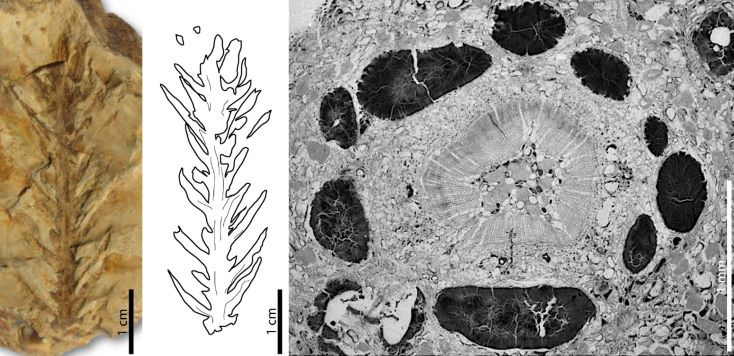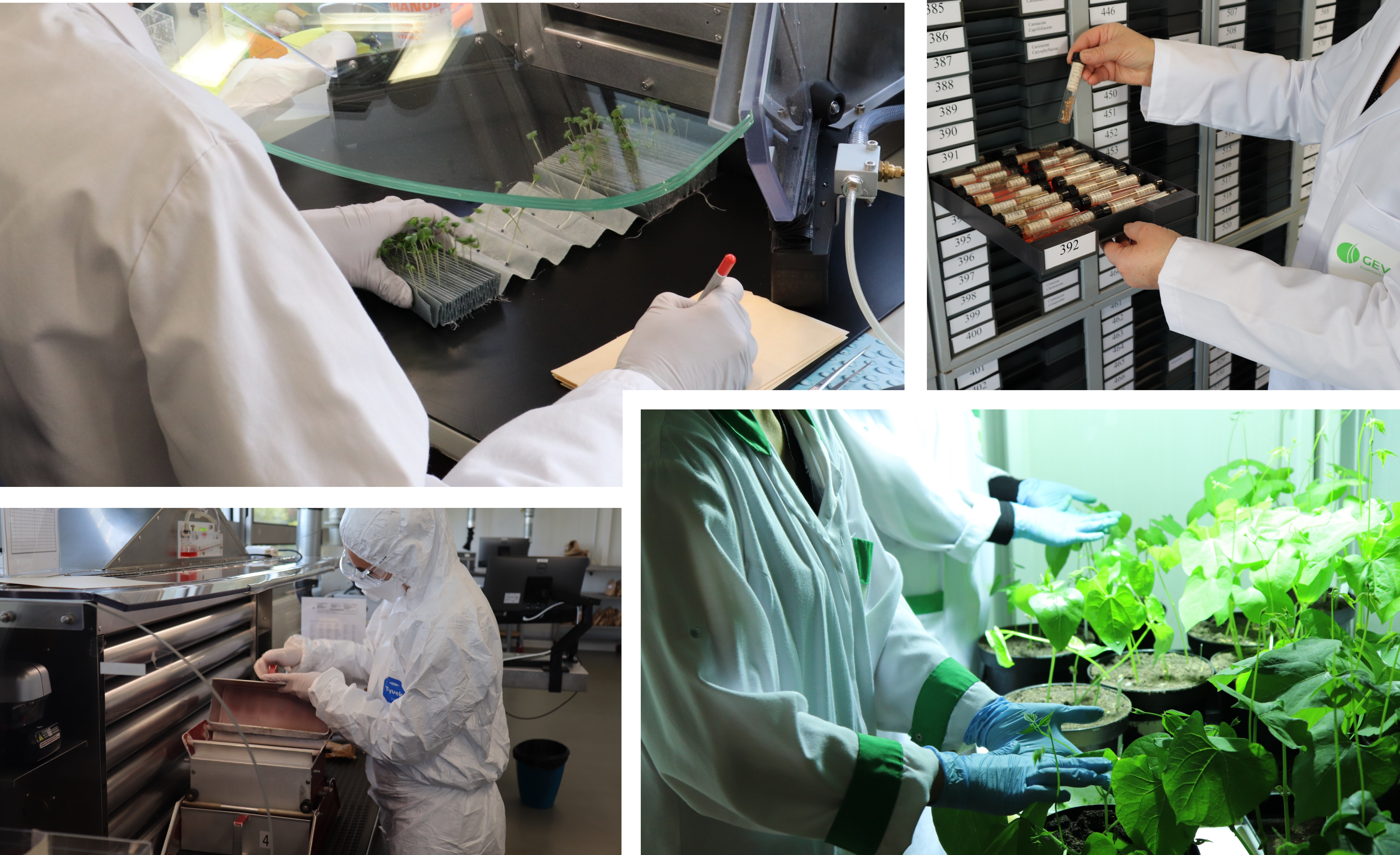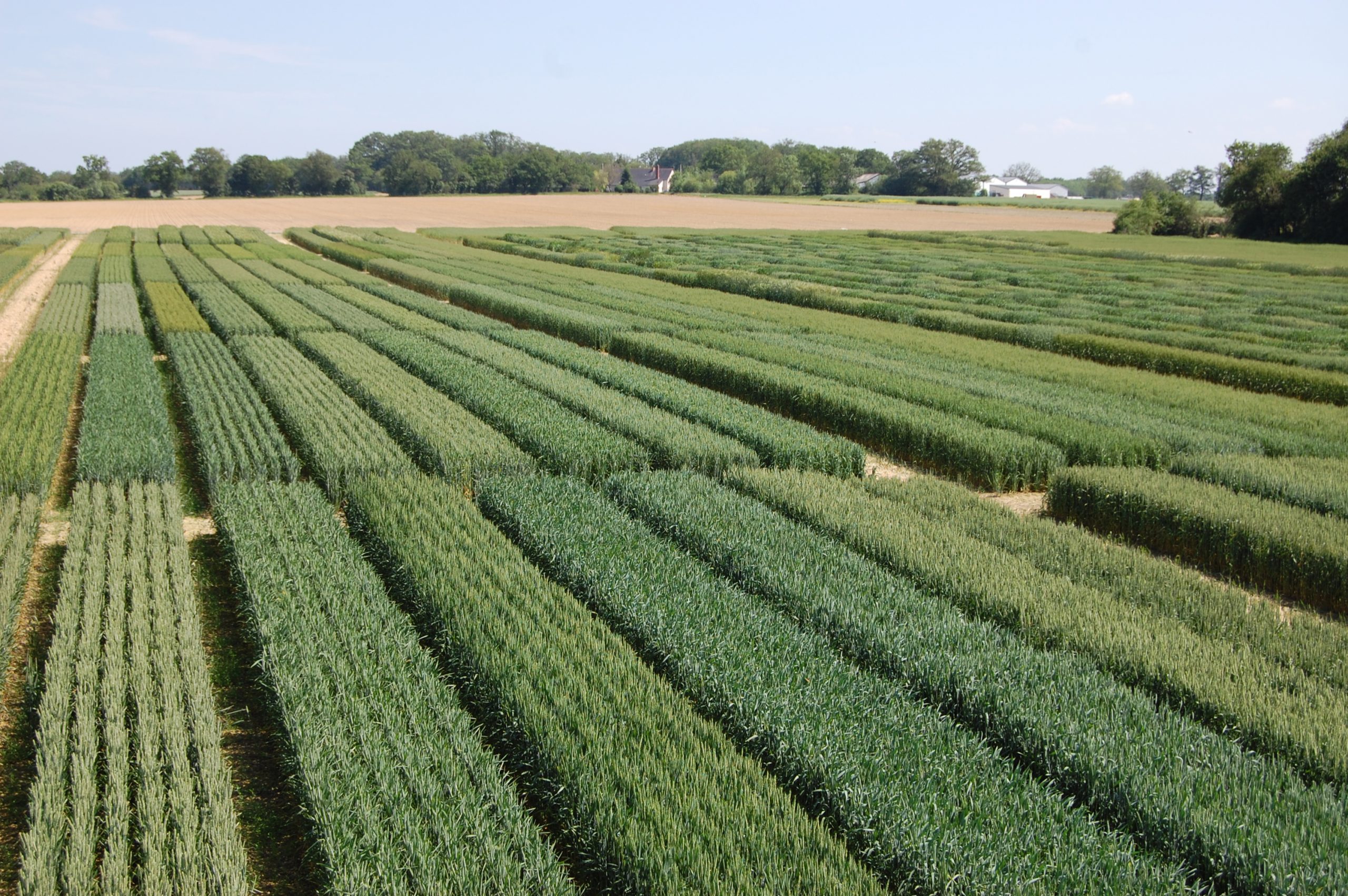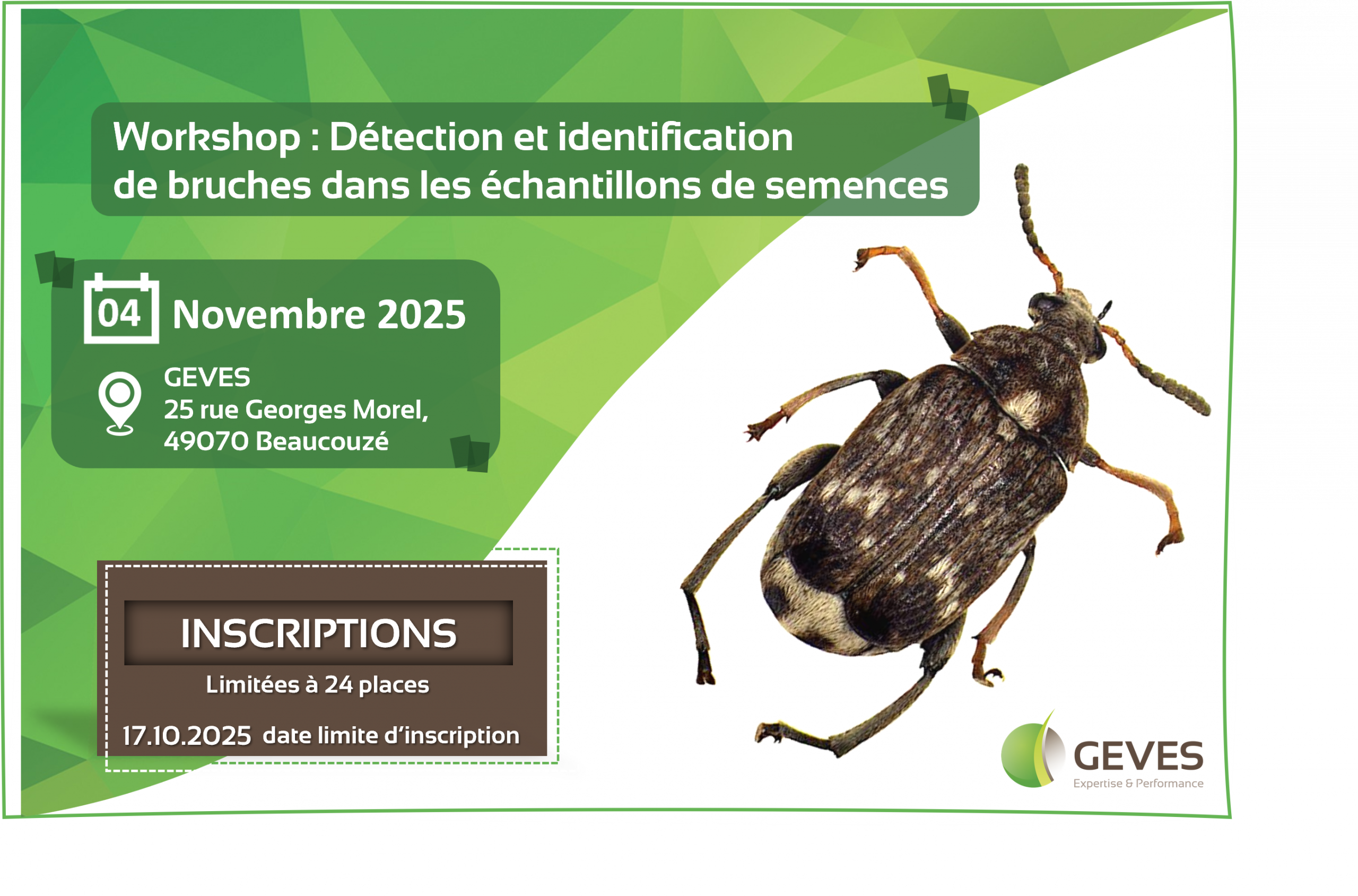
Paleohistology of the Cretaceous resin-producing conifer Geinitzia reichenbachii using X-ray synchrotron microtomography
Our knowledge of flora from the Upper Cretaceous (100 to 66 million years ago) is still very limited. However, palaeontologists have uncovered branches of conifers, fossilised inside flints from Western France. One of these fossils (Geinitzia reichenbachii) was recently investigated at the Grenoble synchrotron (E.S.R.F.). The imaging techniques developed in this particle accelerator have revealed an exceptional preservation of the internal structures of this conifer. The study, recently published in the American Journal of Botany, shows that all the tissues of this plant have been silicified down to the cellular level. This discovery allows us to learn a little more about a typical tree from the Charente coastline during the Cretaceous period.
Left: branch of the conifer Geinitzia reichenbachii. Right: virtual cross-section of the interior of a twig by synchrotron microtomography. All tissues are preserved; the dark masses correspond to the resin canals.
References: Moreau, J. D., Philippe, M., Néraudeau, D., Dépré, E., Le Couls, M., Fernandez, V., & Beurel, S. (2021). Paleohistology of the Cretaceous resin‐producing conifer Geinitzia reichenbachii using X‐ray synchrotron microtomography. American Journal of Botany, 108(9), 1745-1760.




